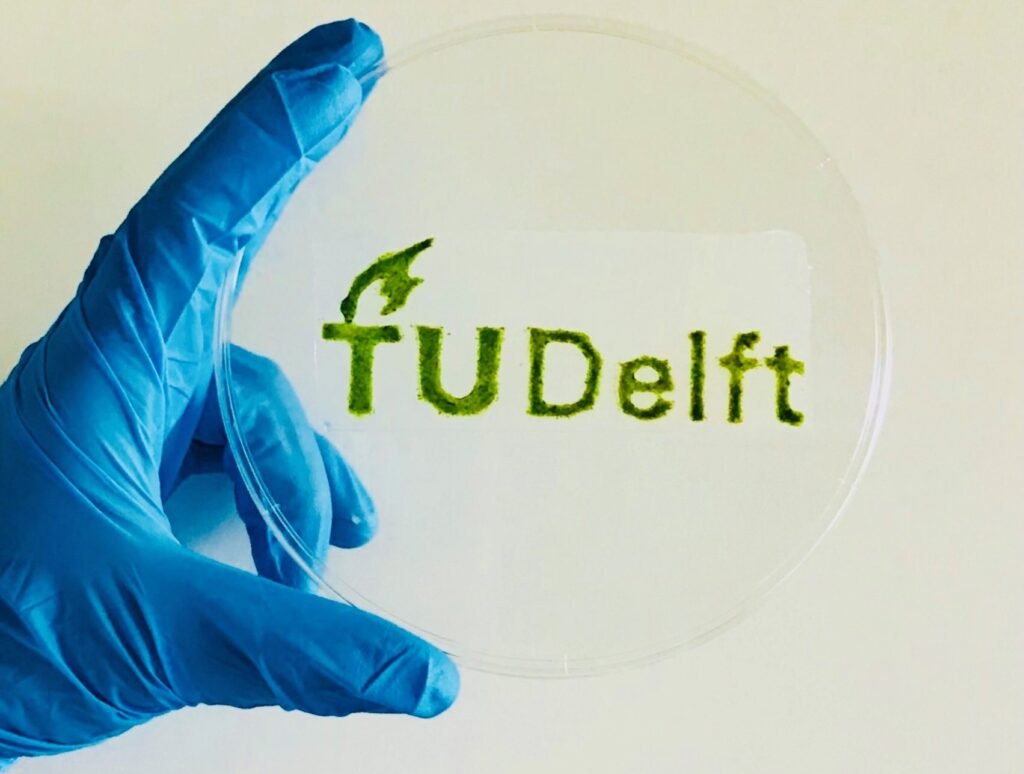The Delft University of Technology in the Netherlands researched 3D printing to lead sustainable energy production on mars by making living material from algae.
3D Printed Artificial Leaves
3D printed artificial leaf is created by using non-living bacterial cellulose and living microalgae. The leaf has a photosynthesis capability of microalgae and tough resilience of bacterial cellulose.
Non-living bacterial cellulose
Aerobically bacterial cellulose converts carbohydrates to acetic acid under the soil. It is characterized by a crystalline nano-fibrillar structure that creates a large surface area to retain a large amount of liquid. It has many properties such as versatility, moldability, biocompatibility, high mechanical strength, etc.
Living microalgae
Microalgae is a biodiesel feedstock and also called third-generation feedstock. These are either eukaryotic or prokaryotic microorganisms growing through photosynthesis having great flexibility and adaptability to grow in a diverse environment.
Living algae is deposited on non-living bacterial cellulose. As we know that the atmosphere of Mars contains more than 95% of carbon dioxide and less than 1% of oxygen. As I mentioned above living microalgae can grow in a diverse environment, the capability of feeding themselves for many days via photosynthesis, and non-living bacterial cellulose can retain a large amount of liquid so due to this property it can accumulate water. In the presence of sunlight, 3D Printed Artificial Leaves can perform photosynthesis and results in the production of oxygen.
Delft team successfully regenerated the material to grow larger samples on-site by just using original culture. They have created bio-printed material that can survive for at least three days without light.

Advantages of 3D Printed Artificial Leaves
- Eco friendly.
- Biodegradable.
- Useful for mass production.
- Creat oxygen where plants cant grow.
- Convert CO2 (a greenhouse gas) and water into oxygen by using sunlight.
- Sugar stored chemical energy can be used to create fuel.
Overview
A study of nature energy shows how a team of researchers from the department of chemistry at Cambridge, in a collaboration with a group of Tokyo university manage to create a prototype artificial leaf in their laboratory.
It is a device that converts carbon dioxide (CO2) and water (H2O) into oxygen (O2) and formic acid (CH₂O₂). Their derivate can directly use as fuel as a neutral energy source or in hydrogen production to activate other processes. This technology is used as a clean source of energy – the sun which helps in limiting the effect of carbon dioxide emission and helps to clean the environment.
“The artificial leaf, A device that replicates photosynthesis to convert carbon dioxide, sunlight, and water into energy and oxygen”, says Maria Pia Rossignaud.
A Ph.D. student Kui yu said that they have created a material that can produce energy by simply placing3D Printed Artificial Leaves into the light.
Applications
- 3D Printed Artificial Leaves material can mimic real leaves.
- 3D Printed Artificial Leaves can convert carbon dioxide and water into oxygen and energy in the presence of sunlight.
- Stored energy in algae in the form of sugar can be converted into usable fuel.
- 3D Printed Artificial Leaves technology can create sense-and-respond products on the earth.
- Providing heat insulation on cold days or water repellent properties on rainy days can react to change in the environment.
Things that make 3D Printed Artificial Leaves sustainable living material are the biodegradable nature of the material and its recyclable nature.
